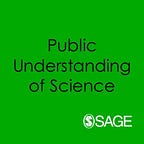Something Deeply Hidden: Quantum Worlds and the Emergence of Spacetime
Review by Jonathan Lyonhart
If you are looking for a readable yet demanding introduction to quantum mechanics or want to see how far the limits of popular science can be stretched without breaking look no further than Carroll’s latest work.
“You don’t need a PhD in theoretical physics to be afraid of quantum mechanics. But it doesn’t hurt,” Carroll’s latest work begins. But the author quickly proceeds to undermine the notion through a project of demystification (‘quantum therapy’). If we stop trying to find some secret behind the oddities and just accept the wave function as the most basic building block of our universe, then the rest of the puzzle falls into place.
The book opens with a topical introduction to quantum mechanics and a chronological survey of its history, weaving discussions of locality and entanglement into tales of Einstein and the Solvay conferences. Carroll laments the lack of work in the foundations of quantum theory since the 1950s. While many physicists have become content with a utilitarian view, Carroll believes the scientist’s job is not merely to figure out what ‘works’ but to unveil the mysteries of the cosmos, seeking a genuine answer to the foundations of quantum mechanics.
Carroll contends that a many-worlds interpretation might provide such an answer. Physicists often observe individual wave functions without considering the broader world as part of that quantum reality. But if there is indeed a broader wave function for the universe as a whole, then our universe must also have existed in a state of superposition, in which case it is only one branch of many possible universes.
Giving those possible universes an actual existence parallel to our own is the simplest explanation of the mathematics, providing a deterministic account where outcomes are not random but merely one of many actualised results. The final section then explores how this might provide a new way forward for quantum gravity. While string theory or loop quantum gravity begin with a classical spacetime and then try to quantize it, the many-worlds theory inverts the process, beginning with an entirely quantized universe from which space and time later emerge.
Superposition, spacetime and entanglement are arguably some of the most counter-intuitive notions in the history of thought, serving as litmus tests for just how far popular science can go. Yet Carroll seems more than up for the challenge. While he demands determination from his readers, anyone willing to make the climb is not abandoned on the journey.
Carroll populates his pages with dozens of helpful drawings, each of which seem to have been made specifically for this book, perfectly suiting his analogies as well as the level of understanding of his intended audience. In turn, he integrates these images into equations; e.g. when calculating the wave function, the normal equation is there in all its glory, but next to each number is a bracketed image, such as a thumb pointing up or down to represent electron spin. This allows readers to take baby steps towards mathematics that might usually scare them away.
One of the longest chapters in the book is a Socratic dialogue between a daughter and father arguing about the many-worlds theory. Carroll uses this narrative structure to solidify previous content into the reader’s understanding and memory. Far from unsophisticated, the Socratic dialogue is arguably the most ancient form of academic discourse, dating back to ancient Greece. Its dialectical format allows a wise person to express the full complexity of an idea, then the usually less intelligent interlocutor to express their confusion (on behalf of the reading audience), going back and forth until complex ideas and simple explanations have been sufficiently wed. Carroll grasps this two-step, using conversation to lull his audience into a deeper level of understanding than they might have otherwise thought themselves capable.
This is indicative of his broader methodology. Carroll elevates his audience, refusing to settle for introductory knowledge, pushing us deeper and harder than we would normally be able to go. If you are looking for a readable yet demanding introduction to quantum mechanics or want to see how far the limits of popular science can be stretched without breaking look no further than Carroll’s latest work.
Jonathan Lyonhart wrote his PhD thesis (Cambridge University, 2020) on the philosophy of space and time in historical perspective, with particular reference to Newton’s view of divine space. He is currently working on a monograph about cosmology, religion and metaphysics, expected 2021.
